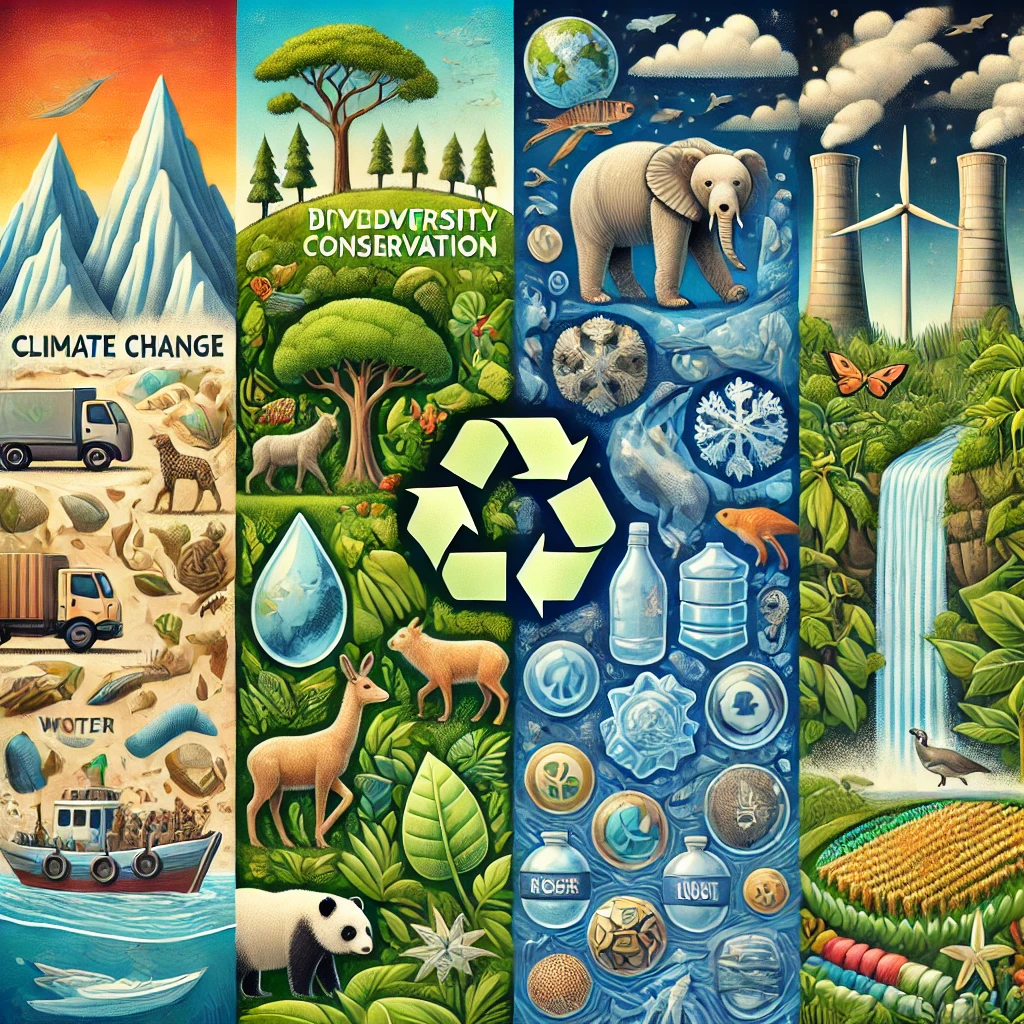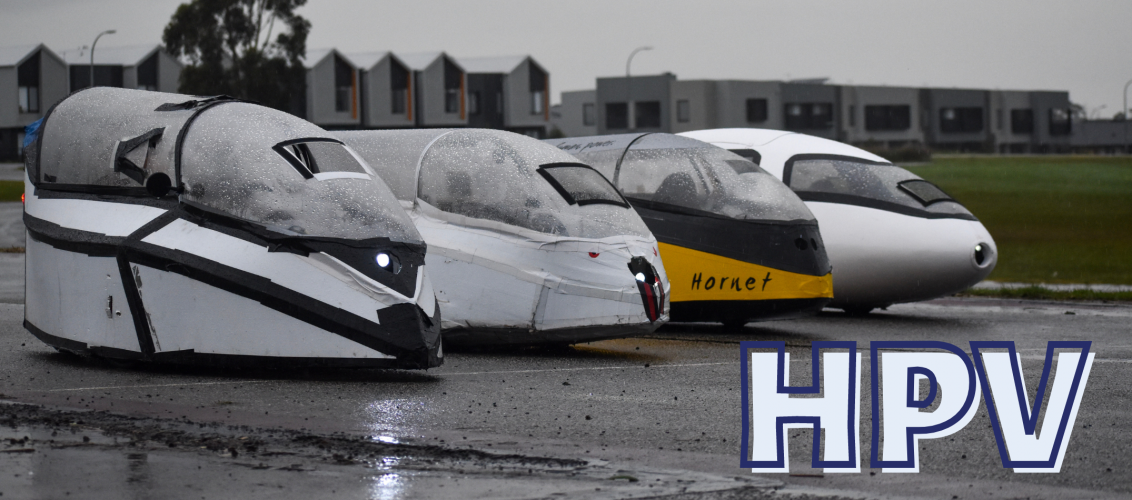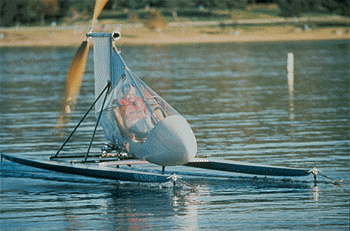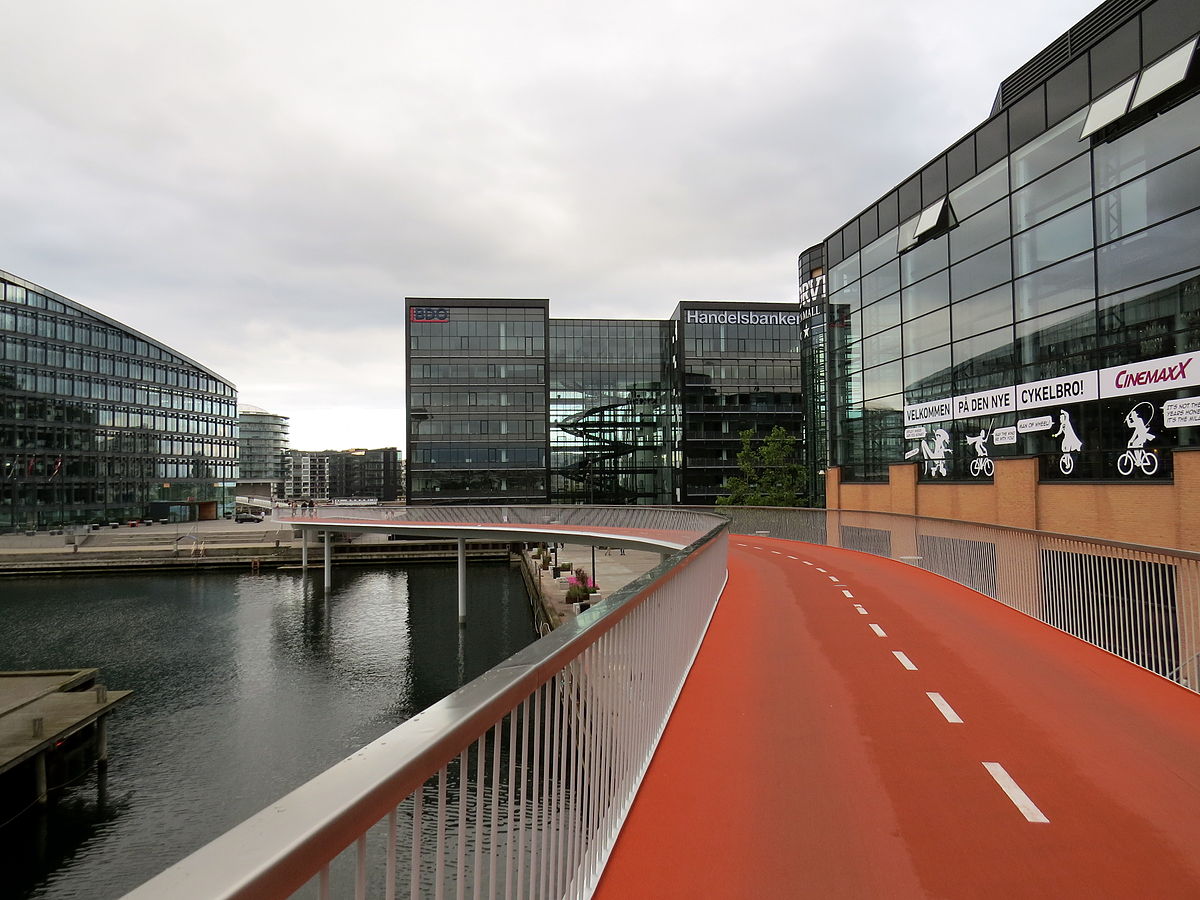User Ideas / Prospects
Betrayal the Other-side of Shared Wall: A Builders Disastrous Effect on Our Peaceful Refuge
In the heart of Alexandria Melbourne, Australia we had renovated our beautiful home of some greater than 20 years, a walled special architecturally designed house and garden in the centre of the storm of the city. For 30 years, it was a gorgeous refuge of solacement, a haven of shimmering beauty and safety.
As an honoured architect designer, my friend had donated to our city with many city improvement creative proposals, but of these none were more beloved that the progressive design of the Lawrence Street, Alexandria, Victorian. Featured in the Sydney Morning Herald, it was hailed as a masterpiece, blending old-world magic with modern elegance.
The Victorian conversion was a creed to architectural creativity—a three-story build and conversion to a Victorian style semi-attached, offering a home for a small family and a home-office or studio. The highlight was the light tower, far above the roof with floating stairway, capturing the essence of the south east and northwestern sky. French style sash windows dressed the main bedroom, while timber casement windows decorate in the bathroom frame the views and filter the light.
However, our beautiful lifestyle was shattered when our neighbour, a builder, moved in next door. Initially welcomed, his illegal actions soon turned our lives upside down threatening the safety of everyone in the area. Without warning, he began demolishing a major supporting wall on our property, the main load-bearing wall of our master bedroom. At one point he had setup a hose from his roof diverted water into our office, causing several thousand dollars damage to our property and undermining its structural integrity.
Additionally to outline the lack of construction experience, we discovered that the intermediate wall lacked the required fire rating, a major oversight that endangered our well-being. In spite of our urgent efforts to rectify the problem with the builder and contacting the council, we were informed the builder's inspector had already signed off on the project, ignoring our concerns and leaving us vulnerable to harm.
Despite getting a judgement in their favour and compensation for restitution, the emotional toll was immeasurable and created many unpleasant memories. They decided to sell their beautiful home, we mourned the loss of our award winning sanctuary, another victim of proper government oversight and dodgy building practices. The lack of proper oversight and governance by government and local council created the environment for this tragedy to unfold, highlighting the demand for more extensive accountability and protection for owners.
As we wrestle with the consequence of this ordeal, we are left to consider: What help do house owners have when their greatest financial investment are made vulnerable by the neglect of dodgy construction companies?
How to Begin - Vote the Best and Worst Construction Companies in Commonwealth of Australia..?
The Insolvent, Defendant, and the Collapse of Building CompanyToplace's Billion-Dollar Empire
from Sept 2023
A Insolvent building adviser played a crucial part in securing his insolvent corporation a highly lucrative job — supervising the collapse of Fugitive Jean Nassif's corporate empire, which went under debts in excess of $1.24 billion, inclusive $88.5 million due to suppliers and onsite builders.
Fresh revelations about the ruin of Nassif's Toplace group have surfaced in documents presented to the Federal Court this week by administrators from dVT Group. These documents reveal that secured creditors, such as banks with mortgages on Toplace properties and offshore lenders in tax havens like the British Virgin Islands, are owed $1 billion.
More Relevant Subject Matter:
Riad Tayeh, and Toplace's Skyview construction in Castle Hill.
Creditors without Security, have issued financial claims totalling an est. $244 million.
Court filed claims also show that Riad Tayeh, company founder of dVT Group of companies, played a fundamental responsibility in securing his firm's appointment as bankruptcy managers. Even though being declared insolvent in July 2022 with $5.4 million in debt, Tayeh, now a business advisor, and colleague Antony Resnick attended essential meetings with Toplace executives in the days before the companies appointment as bankruptcy administrators.
Among those involved at the meetings on July 2019 was Jean Nassif's 29-year-old daughter, Ashlyn, whose legal practicing certificate has been suspended while she fights charges related to a $150 million fraud tied to Toplace's Skyview construction development in Castle Hill.
Riad Tayeh was charged bankrupt in May last year.
Just days before these meetings, a warrant was issued for the arrest of Jean Nassif, 55, who fled Sydney for Dubai in December 2022. Jean and Ashlyn Nassif are accused of falsifying contracts to secure a $150 million loan from Westpac.
In July, Resnick and fellow dVT partner Suelen McCallum were nominated voluntary bankruptcy managers for Toplace, following a resolution passed by Jean Nassif, Toplace's sole director, via email just hours prior. The bankruptcy administrators now face the task of handling one of New South Wales' biggest corporate bankruptcy's.
Resnick filed an affidavit in the Federal Court indicating that while Toplace's assets are valued at approximately $1.47 billion, its debts are nearly the same amount. Administrators are also investigating more than 3,000 residential apartments still under development.
Further complicating the administrators' task is the web of intercompany loans among Nassif's entities, which amount to $319 million. adding that Toplace's financial books had not been properly updated since 2021.
Resolution Reached for Mascot Towers, Owners to Finally Escape Longstanding Struggles...
After five years of enduring legal battles and financial burdens, relief may be in sight for the long-suffering apartment owners of Mascot Towers in Sydney. A landmark deal brokered by the New South Wales government offers a pathway for owners to sell their properties individually, potentially freeing them from debt and uncertainty. The majority of owners have opted to accept the government's proposal, which involves selling to a third-party commercial consortium rather than pursuing a collective sale.
As part of the agreement, owners will receive a portion of the $30 million building price, along with means-tested support from the state government. Additionally, banks have agreed to reduce loan balances by up to 40% for owner-occupiers, enabling them to move out without financial encumbrances.
However, this debt-relief option is exclusively available to those who resided in the property prior to its evacuation in 2019 due to structural defects. Eligible owner-occupiers, along with select investors, may qualify for government assistance of up to $120,000, depending on their income and assets. While the deal offers a fresh start for many, it comes with the realization that property values have significantly depreciated since the original purchase. Despite this drawback, the Minister for Fair Trading, Anoulack Chanthivong, views the agreement as a crucial step towards closure for affected owners, describing it as the end of a "dark chapter" in the state's building history.
The next phase involves determining the extent of government support for owners and ensuring that lenders fulfill their commitments. The journey towards resolution began in 2019 when residents were evacuated due to structural concerns, prompting a prolonged battle for justice and financial relief. Throughout this ordeal, owners faced the burden of ongoing levies, mortgages, and remediation costs, exacerbating their plight. The evacuation prompted a grassroots campaign urging regulatory reforms and developer accountability, culminating in the current agreement.
To date, the NSW government has allocated $21 million in support to affected owners, underscoring its commitment to addressing the repercussions of defective building practices. As the community looks ahead to a new chapter, the resolution of Mascot Towers stands as a testament to perseverance and collective action in the face of adversity.
Haustiere im Alltag: Pro und Contra – Was du beachten solltest
Haustiere bereichern unser Leben und können jedoch auch einige Hürden mit sich bringen. Überlegst du, ein Haustier zu adoptieren, ist es ratsam, die Pro und Contra abzuwägen, um eine fundierte Entscheidung zu treffen. In diesem Blogbeitrag beleuchten wir die Vor- und Nachteile der Haustierhaltung.
Vorteile der Haustierhaltung
1. Gesellschaft und emotionale Unterstützung
- Haustiere bieten bedingungslose Liebe und sind eine großartige Quelle der Gesellschaft . Sie helfen, Einsamkeit zu bekämpfen , besonders für Menschen, die alleine wohnen. Tiere wie Hunde und Katzen können emotionalen Beistand leisten und das allgemeine Wohlbefinden verbessern .
2. Förderung der körperlichen Aktivität
- Hundehalter müssen regelmäßig spazieren gehen , was eine wunderbare Gelegenheit bietet, sich fit zu halten. Diese tägliche Bewegung ist nicht nur gut für den Hund , sondern hilft auch dem Halter, fit zu bleiben .
3. Verbesserung der mentalen Gesundheit
- Untersuchungen belegen, dass Haustiere helfen können , Stress zu reduzieren und das Gemüt aufzuhellen. Der Kontakt zu einem Tier setzt Hormone frei, die für Stressabbau verantwortlich sind .
4. Lernmöglichkeiten für Kinder
- Kinder, die mit Haustieren aufwachsen , lernen früh Verantwortung. Das Füttern und Pflegen eines Haustieres fördert Mitgefühl und Fürsorge bei Kindern.
5. Förderung sozialer Interaktionen
- Vor allem Hunde, schaffen soziale Gelegenheiten. Spaziergänge oder Besuche von Hundeveranstaltungen bieten die Möglichkeit , neue Freundschaften zu knüpfen.
Nachteile der Haustierhaltung
1. Hoher Zeitaufwand
- Die Pflege eines Haustieres erfordert Zeit und Mühe. Regelmäßiges Füttern, Pflege, Bewegung gehören zum Leben mit einem Haustier. Beruflich eingespannten Menschen könnte diese Verpflichtung schwerfallen .
2. Finanzielle Kosten
- Die Haltung von Haustieren ist nicht billig. Neben den Kosten für die Anschaffung fallen regelmäßige Kosten für Futter, Tierarzt und Pflegeprodukte an.
3. Verantwortung und langfristige Verpflichtung
- Ein Haustier bedeutet Verantwortung. Einige Tiere, wie Katzen und Hunde, können über 10 bis 20 Jahre alt werden .
4. Einschränkungen bei Freizeitaktivitäten
- Die Freiheit bei Reisen kann eingeschränkt sein. Kurztrips oder längere Reisen erfordern entweder Betreuung für das Tier oder passende Reiseplanung.
5. Hygiene- und Gesundheitsrisiken
- Tierhaare und Hautschuppen können Allergien verursachen. Schmutz und unangenehme Gerüche können ein Problem sein .
Fazit: Was du vor der Anschaffung eines Haustiers bedenken solltest
Ein Haustier kann dein Leben bereichern, aber du solltest dich der Verantwortung bewusst sein. Haustiere bereichern dein Leben, können aber auch zeit- und kostenintensiv sein . go here

Why It’s Critical: Climate change is accelerating, with 2023 marking one of the hottest years on record, and some regions are facing unprecedented heat waves, droughts, and natural disasters. If global temperatures rise by 2.7°C by the century’s end, we’ll experience catastrophic changes, from coastal cities going underwater to severe agricultural disruption.
Solutions Needed and Examples:
- Decarbonizing Energy Sources: The International Renewable Energy Agency (IRENA) notes that renewables could supply up to 86% of global electricity by 2050. Example: Denmark has committed to generating 100% of its electricity from renewables by 2030.
- Carbon Capture and Storage (CCS): CCS can capture up to 90% of CO₂ emissions from sources like power plants. Example: The Boundary Dam CCS Project in Canada captures 1 million tons of CO₂ annually.
- Energy Efficiency Measures: Energy efficiency improvements could halve energy demand growth. Example: Japan has adopted energy-efficient building codes and appliance standards that have cut down energy use significantly.
- Sustainable Land Use: Forest preservation is vital, as deforestation contributes around 10% of annual GHG emissions. Example: Costa Rica has reversed deforestation, doubling its forest cover while promoting eco-tourism and sustainable land use.
Why It’s Critical: The Earth is experiencing its sixth mass extinction, with species vanishing at a rate 100 to 1,000 times faster than normal due to human activity. This not only reduces ecosystem resilience but also affects our food systems, water sources, and the stability of natural cycles.
Solutions Needed and Examples:
- Protected Natural Habitats: Protecting natural areas helps maintain biodiversity and prevent species loss. Example: The Amazon Rainforest hosts 10% of known species; countries like Brazil have created protected areas, although illegal deforestation remains a challenge.
- Restoration Projects: Restoration initiatives help recover damaged ecosystems. Example: China’s "Great Green Wall" reforestation project has planted over 66 billion trees, aimed at reversing desertification.
- Wildlife Corridors: Corridors allow species to migrate safely between habitats, which is crucial for genetic diversity. Example: The Yellowstone to Yukon (Y2Y) initiative protects migration corridors for large mammals across Canada and the U.S.
- Reducing Wildlife Exploitation: Curbing the wildlife trade and hunting can protect endangered species. Example: Kenya’s strict anti-poaching laws have reduced the poaching of elephants and rhinos, helping populations stabilize.
Why It’s Critical: Freshwater scarcity is already a reality for over 2 billion people, and climate change worsens the situation with increased droughts and extreme weather events. Without sustainable management, water shortages could lead to food crises and geopolitical conflict.
Solutions Needed and Examples:
- Improving Water Efficiency: Improving irrigation efficiency in agriculture can reduce water use by up to 30%. Example: Israel’s drip irrigation technology has revolutionized agriculture, reducing water use while boosting crop yields.
- Protecting Water Bodies: Protecting rivers, lakes, and groundwater from pollution is crucial for clean water supplies. Example: The Ganges River Cleanup in India addresses industrial waste and sewage, critical for millions dependent on the river.
- Desalination and Recycling Innovations: Desalination and recycling offer alternative water solutions. Example: Singapore’s NEWater system recycles wastewater, meeting 40% of the nation’s water needs.
- Integrated Water Resource Management (IWRM): Managing water resources collaboratively across regions ensures sustainable use. Example: The Mekong River Commission coordinates sustainable water usage among Southeast Asian countries sharing the river.
Why It’s Critical: Pollution from waste, particularly plastic, is devastating our oceans and land, with plastics taking centuries to decompose. Toxic waste from electronics and industry is also a major health hazard. If current trends continue, there could be more plastic in the ocean than fish by 2050.
Solutions Needed and Examples:
- Reducing Plastic Use: Reducing single-use plastic can prevent it from polluting oceans and harming marine life. Example: Rwanda banned plastic bags in 2008 and became one of the cleanest countries in Africa.
- Waste-to-Energy and Recycling Infrastructure: Efficient waste management systems reduce landfill use and recover valuable materials. Example: Sweden’s waste-to-energy plants convert almost 99% of household waste into energy.
- Toxic Waste Regulation: Enforcing stricter industrial regulations can prevent harmful chemicals from polluting ecosystems. Example: The European Union’s REACH regulation ensures strict monitoring of chemical usage.
- Consumer Awareness Campaigns: Educating people about sustainable practices can reduce waste and pollution. Example: South Korea’s recycling programs are highly effective, with citizens participating actively due to government-led education campaigns.
Why It’s Critical: Current agricultural practices are a major driver of environmental degradation, from deforestation to excessive water use and pollution. Agriculture accounts for 10-12% of global GHG emissions and is a leading cause of habitat loss and soil degradation. Without sustainable methods, food production systems could collapse under population pressure and climate impacts.
Solutions Needed and Examples:
- Regenerative Agriculture: Regenerative practices can enrich soil, reduce carbon emissions, and improve biodiversity. Example: The Rodale Institute in the U.S. promotes regenerative agriculture, showing it can increase yields while lowering environmental impact.
- Reducing Food Waste: Up to 30% of food is wasted globally, contributing to 8-10% of GHG emissions. Example: France implemented strict policies against food waste, including requiring supermarkets to donate unsold food to charities.
- Alternative Proteins and Vertical Farming: Reducing reliance on livestock by adopting alternative proteins and efficient farming methods can cut emissions and land use. Example: Singapore has invested heavily in vertical farms, producing fresh vegetables locally with minimal land.
- Agroforestry and Mixed Cropping: Integrating trees and diverse crops enriches soil, conserves water, and protects biodiversity. Example: In Kenya, agroforestry practices, like planting trees with crops, improve yields and provide firewood without harming forests.
Addressing these urgent environmental problems requires commitment at every level—from individuals to governments and corporations. Each solution example shows the impact these measures can have if they are implemented broadly, proving that a sustainable future is achievable with immediate, coordinated action.
Cities leading the way in human-powered vehicle (HPV) infrastructure and the sustainable transformations they’re making to incorporate bicycles and other HPVs into urban planning. This includes their specific initiatives, benefits, and challenges:
1. Copenhagen, Denmark
Copenhagen is often cited as the gold standard for bike-friendly cities. With over 385 kilometers of dedicated bike lanes and iconic infrastructure such as the "Cycle Snake" bridge, the city has invested heavily in making cycling safe and accessible. Since 2014, cycle traffic has increased by 80%, with approximately 20,700 daily crossings on the Cycle Snake alone. This infrastructure provides clear lanes separated from car traffic and integrates innovative elements like curb-separated cycle tracks, bike-priority traffic lights, and set-back stop lines that increase safety at intersections. Copenhagen aims to achieve a 50% cycling modal share for trips to work or education by 2025, bolstered by over €10 million allocated in 2022 alone for new cycling projects
Visit CopenhagenState of GreenVisitDenmark- Infrastructure: Copenhagen is known for its comprehensive bike infrastructure, with dedicated bike lanes, innovative bike bridges, and a focus on bike-first urban planning. Approximately 62% of residents commute by bike, supported by city policies aimed at reducing car traffic and promoting cycling as a primary mode of transportation.
- Benefits: Copenhagen’s investment in HPV infrastructure contributes to reduced air pollution, improved public health, and decreased traffic congestion. The city’s emphasis on cycling has helped make it one of the cleanest and most active cities globally.
- Challenges: Even with its impressive cycling infrastructure, Copenhagen faces challenges in managing high cyclist volumes and maintaining the infrastructure during cold winters. However, ongoing innovations, like heated bike lanes, aim to address this issue
2. Bogotá, ColombiaIn Bogotá, cycling is integrated into the city’s congestion management and environmental strategies. The Ciclovía program is a notable example: every Sunday, major streets are closed to cars, allowing thousands of cyclists and pedestrians exclusive use of around 120 kilometers of roadways. This initiative encourages cycling while reducing vehicular emissions on high-traffic days. Bogotá has also added permanent bike lanes to support everyday commuting, which has helped the city reduce traffic congestion and air pollution, while promoting a healthy lifestyle among residentsWorld Resources InstituteArchDaily
- Infrastructure: Bogotá has transformed its streets with dedicated bike lanes and the Ciclovía program, where cars are banned on certain roads every Sunday, allowing cyclists and pedestrians exclusive use. This initiative spans about 120 kilometers of roadways.
- Benefits: These efforts significantly reduce traffic congestion, cut down emissions, and provide residents with a safe, open space for recreation and commuting. The program is a model for other cities worldwide looking to promote sustainable and active transportation.
- Challenges: While the Ciclovía program is popular, Bogotá still needs more year-round dedicated bike lanes to encourage daily HPV commuting. The city is also working on addressing safety concerns and infrastructure maintenance to support its growing cyclist populationWorld Resources Institute.

Utrecht has embraced cycling with a robust approach to multimodal commuting, connecting bike infrastructure directly with public transit. It is home to the world's largest bike parking facility, which accommodates over 22,000 bikes, facilitating easy transitions between cycling and train travel. Utrecht has committed to doubling bike commuting by 2030 and expanding its network of "cycle superhighways" to support long-distance cycling, which reduces car dependency and lowers emissions. The city’s emphasis on convenience and connectivity has made cycling a primary mode of transport
ArchDailyVisit Copenhagen- Infrastructure: Utrecht has invested heavily in bike infrastructure, including the world’s largest bike parking facility, with over 22,000 spaces. The city integrates bike paths seamlessly with public transit stations, facilitating multi-modal commuting and reducing car dependency.
- Benefits: Utrecht’s emphasis on cycling infrastructure has led to a reduction in car use and associated pollution, as well as economic benefits from fewer infrastructure maintenance requirements compared to car-dependent cities. The facility serves as a central hub that improves the commute experience for cyclists, with easy access to amenities.
- Challenges: The demand for bike facilities continues to grow as cycling becomes even more popular, and the city is challenged with ensuring sufficient space and integration with other forms of public transport to keep up with the increasing usageArchDaily.

Fortaleza demonstrates how cities in emerging economies can prioritize cycling infrastructure. The city has funded its cycling projects through creative revenue sources, such as online parking fees, which financed a 524-kilometer expansion of its bike network. Fortaleza’s strategic bike lanes have made cycling safer and more accessible, helping reduce congestion and providing an affordable commuting alternative. This infrastructure boost increased the city’s cycling rate, showing that even in car-centric urban areas, bike-friendly infrastructure can change commuting patterns
World Resources InstituteC40 Knowledge Hub- Infrastructure: Fortaleza’s innovative approach to cycling infrastructure includes a strategic plan that expanded its bike lane network by 524 kilometers. The city funded this expansion through revenue generated from an online parking app, demonstrating a creative approach to financing.
- Benefits: Fortaleza’s bike lane expansion has helped make cycling safer and more appealing, significantly increasing the number of daily cyclists. The infrastructure has also contributed to a decrease in traffic congestion and vehicular pollution, benefiting the overall urban environment.
- Challenges: As a rapidly growing city, Fortaleza must balance infrastructure needs across various transport modes. Ensuring consistent maintenance and safety on its bike paths and addressing funding limitations remain key challenges as the city seeks to make cycling a primary mode of transportationWorld Resources Institute.

Montreal is North America’s leader in cycling infrastructure, with over 500 kilometers of bike paths and numerous protected lanes. The city integrates bike paths with its public transit system and operates one of the top-rated bike-sharing programs in the world. Montreal’s seasonal challenges are addressed through snow removal on key bike paths, ensuring year-round cycling access. The emphasis on safe and interconnected bike routes not only supports Montreal’s sustainability goals but also attracts cycling tourism, providing economic benefits as well
ArchDailyVisitDenmark- Infrastructure: Montreal is considered a leader in North America for its extensive bike infrastructure, which includes protected bike lanes and intersections specifically designed for cyclists. The city has also implemented bike-sharing programs to promote HPV use.
- Benefits: The increased accessibility and safety of bike infrastructure in Montreal have encouraged more residents to cycle, leading to reduced traffic congestion and emissions. The emphasis on cycling also supports a healthier lifestyle for residents and has boosted local tourism by making the city more accessible for visitors.
- Challenges: Montreal’s cold winters pose a challenge to year-round cycling. The city is exploring options for winter maintenance of bike paths, as well as other improvements to encourage all-season cycling, as cycling infrastructure investments are critical for reducing car use over timeArchDaily.
These cities showcase diverse strategies and highlight the profound impact HPV infrastructure can have on urban environments. Investment in cycling lanes, dedicated paths, bike parking, and multi-modal commuting options are essential steps for integrating HPVs into urban landscapes. Cities that prioritize HPVs benefit from reduced pollution, improved public health, and less congestion. However, seasonal challenges, safety concerns, and the need for ongoing funding remain as areas to address.
These examples demonstrate that with creative approaches to funding, thoughtful planning, and policy support, cities worldwide can create a future where human-powered transportation plays a central role.

future prospects of human-powered vehicles, particularly focusing on new materials and designs, electric-assist technology, urban infrastructure improvements, and the environmental and economic impact of these developments. I'll also highlight some promising concepts currently in testing and development.
1. Electric-Assist Technology and Hybrid HPVs- Pedal-Assist Systems: These systems integrate a small electric motor that activates as the rider pedals, providing a boost. This approach allows for longer commutes and easier uphill rides, making human-powered transport more feasible in hilly cities and for less physically intensive travel.
- Hybrid Velomobiles: Hybrid velomobiles combine the aerodynamic efficiency of enclosed human-powered vehicles with electric-assist features. Designed to reach higher speeds with less exertion, they are especially practical for all-weather, year-round commuting.
- Battery Advancements: Lightweight, longer-lasting batteries are essential to making these hybrid systems viable. Developments in lithium-ion and, more recently, solid-state batteries could enhance the range and lifespan of electric-assist HPVs.

- Lightweight and Durable Materials: Modern materials like carbon fiber, Kevlar, and titanium make HPVs lighter, faster, and more robust. Carbon fiber is especially popular for high-end bicycles and velomobiles due to its high strength-to-weight ratio, though the cost remains a barrier for some applications.
- Streamlined Designs: Aerodynamic innovation has allowed for the creation of streamlined shapes that reduce air resistance, significantly increasing potential speeds. This is especially beneficial for velomobiles and recumbent bikes used in racing and endurance events.
- Sustainable Materials: Some designers are experimenting with sustainable materials, such as bamboo, for frames and components. Bamboo bikes are not only strong and lightweight but also eco-friendly and affordable, with a lower production impact than metal frames.
- Dedicated HPV Lanes: Many cities are building dedicated bike lanes or multi-use paths to accommodate HPVs. These lanes separate human-powered vehicles from motorized traffic, increasing safety and encouraging more residents to use HPVs.
- Bike-Share Programs: Bike-sharing systems, such as Citi Bike in New York or Vélib' in Paris, are expanding their offerings to include electric-assist bikes and cargo bikes. This makes HPVs accessible to more people and provides affordable options for short-distance trips.
- Policy Support: Cities and states are introducing incentives such as tax credits, subsidies, or grants to encourage the purchase of HPVs and electric-assist models. Programs aimed at reducing carbon footprints and promoting green transit often include provisions for HPVs.
- Carbon Emissions Reduction: With zero tailpipe emissions, HPVs can drastically reduce transportation’s impact on air quality and carbon emissions. They are also quieter, which can help reduce noise pollution, improving overall quality of life in urban environments.
- Affordable Mobility: Human-powered vehicles offer a cost-effective alternative to motorized vehicles. With lower operational and maintenance costs and no need for fuel, HPVs provide accessible transportation, especially in areas where car ownership might be economically challenging.
- Health Cost Savings: HPVs promote a more active lifestyle, which can reduce healthcare costs related to lifestyle diseases, such as obesity, diabetes, and cardiovascular issues. Cities that promote cycling and other human-powered transport modes often see significant public health benefits.
- Human-Powered Trains and Rails: There are concepts of small, pedal-powered rail vehicles that could be used on abandoned tracks or dedicated rail paths. These vehicles combine the efficiency of rail with human-powered mobility, potentially transforming unused rail networks into eco-friendly transit routes.
- Flying HPVs: Human-powered aircraft like the Daedalus and Gossamer Condor have demonstrated that sustained, albeit limited, flight is possible using human power. Future designs might integrate lightweight electric assistance, enabling short-range, eco-friendly flights.
- HPVs for Cargo and Freight: Innovations in cargo bikes and trikes are enabling the transport of goods in urban settings. With electric-assist options, these vehicles are helping to reduce delivery emissions in city centers and are especially promising for last-mile deliveries, where traditional trucks struggle with congestion.
- Infrastructure Gaps: While cities are improving HPV infrastructure, many places still lack sufficient lanes, storage, and repair facilities for bikes and similar vehicles.
- Affordability of Advanced HPVs: High-end HPVs with electric-assist and advanced materials can be cost-prohibitive, limiting access. As technology improves and demand grows, prices may decrease, but initial costs remain a challenge.
- Weather-Resistant Designs: Velomobiles offer a partial solution, but additional innovation in weatherproofing may be needed for widespread adoption, especially in areas with extreme climates.
The future of human-powered vehicles looks promising, particularly as technology, design, and urban infrastructure evolve. By combining human energy with advanced engineering and sustainable practices, HPVs could play a pivotal role in shaping an eco-friendly, health-conscious, and cost-effective transportation landscape. Whether for urban commutes, recreational activities, or even short-haul logistics, HPVs stand as a powerful tool in our transition toward greener and more sustainable cities.

Introduction to Human-Powered Vehicles
- Definition: HPVs are transport systems that operate solely on human muscle power. This category includes any vehicle in which human effort, typically pedaling, rowing, or pushing, drives the movement.
- History: Human-powered transportation dates back thousands of years, with early examples like foot-powered canoes or rafts. The modern era introduced bicycles, marking a revolution in efficient human-powered travel.
- Bicycles: The most common HPV, bicycles are globally popular for short-distance travel, exercise, and recreation.

- Recumbent Bikes: These are bikes where riders sit in a reclined position, offering greater aerodynamic efficiency and comfort for long rides.

- Velomobiles: These are enclosed, often streamlined bicycles with aerodynamic designs, popular for commuters and enthusiasts who seek speed and weather protection.

- Watercrafts: Kayaks, canoes, and paddleboards are human-powered options for water-based activities.

- Human-Powered Aircrafts: Though rare and experimental, these aircrafts are propelled by pedaling, with significant achievements like the flight of the Gossamer Albatross in 1979.
- Human-Powered Rail and Snow Vehicles: Examples include railbikes (bicycles adapted for railways) and pedal-powered snow vehicles.
- Environmental Impact: HPVs have a minimal carbon footprint, contributing to reduced greenhouse gas emissions and air pollution.
- Health and Fitness: Using HPVs increases physical activity, benefiting cardiovascular health, muscle tone, and mental well-being.
- Cost-Effectiveness: These vehicles require little to no fuel and have lower maintenance costs, making them affordable and sustainable.
- Traffic and Infrastructure: HPVs alleviate traffic congestion and have a low impact on infrastructure, as they require less space and maintenance.
- Physical Effort: HPVs require sustained physical exertion, which can be a barrier for longer distances, hilly terrains, or those with limited physical ability.
- Weather Dependency: Rain, snow, or extreme temperatures can make human-powered travel uncomfortable or dangerous, especially for open vehicles like bicycles.
- Speed and Range Limitations: While highly efficient, HPVs are slower than motorized vehicles, making them less suitable for long-distance or high-speed travel.
- Safety Concerns: HPVs, particularly bicycles, are vulnerable on roads, often lacking dedicated lanes and facing risk from motor vehicles.
- Electric-Assist Options: Adding electric motors for an extra boost, especially uphill, is becoming common. These hybrid systems are referred to as pedal-assist or pedelec vehicles.
- Advanced Materials and Design: Innovations in lightweight and durable materials, like carbon fiber, are creating faster, safer, and more comfortable HPVs.
- Urban Infrastructure: Cities are increasingly investing in HPV-friendly infrastructure, with expanded bike lanes, bike-sharing programs, and dedicated parking for increased accessibility.
Human-powered vehicles represent an innovative, sustainable, and healthy mode of transportation with a long history and promising future. As cities evolve to become more environmentally friendly and infrastructure improves, HPVs may play an even greater role in modern transportation.

Agriculture, once solely dependent on nature’s rhythms, is facing unprecedented challenges in the modern era. Climate change has introduced irregular weather patterns, making farming increasingly unpredictable and riskier. With the global population on the rise, food security is more important than ever, and it has become clear that the agricultural sector can no longer rely on favourable climates alone to feed the world. To address this, there is an urgent need for countries to integrate engineering and technology into farming practices. This combination is not just a luxury, but a necessity, as no one can expect that climate will always favour the farmers.
The impacts of climate change are already being felt across the globe, particularly in agriculture. Farmers are battling with extreme weather events such as droughts, floods, heatwaves, and unseasonable frosts. These changes directly affect crop yields, disrupt planting schedules, and reduce the predictability on which traditional farming methods rely.
In some regions, water scarcity is becoming a pressing issue, with aquifers drying up and rainfall patterns becoming unreliable. In others, soil fertility is declining due to erosion, desertification, and increased salinity caused by rising temperatures. The natural environment, which once provided a stable foundation for agriculture, is now in flux.
These challenges make it clear that relying solely on traditional practices is no longer feasible for modern farming. To protect food security and the livelihoods of farmers, agriculture must evolve, and this is where engineering and technology come into play.
Engineering has a crucial role to play in transforming agriculture to meet the challenges posed by an unpredictable climate. Through innovative infrastructure and systems, engineering can make farming more efficient, sustainable, and climate-resilient.
Modern Irrigation Systems: In water-scarce regions, engineering has already made a significant impact with the development of advanced irrigation techniques such as drip irrigation and automated sprinklers. These systems ensure that water is used efficiently, minimizing waste and ensuring crops receive sufficient hydration, even during droughts. Some systems can even be connected to weather forecasting models to automatically adjust water usage based on upcoming conditions.
Greenhouses and Controlled Environments: Engineers have developed greenhouses that create artificial environments for growing crops year-round, shielding plants from the unpredictability of external weather. Through climate control technologies, crops can be grown in areas with harsh climates, expanding the agricultural possibilities for regions previously deemed unsuitable for farming.
Soil and Water Management: Soil erosion, depletion, and salinity are major threats to sustainable agriculture. Engineering solutions like contour plowing, terracing, and artificial drainage systems help retain soil nutrients and prevent waterlogging, enabling farms to remain productive even in challenging environmental conditions.
Mechanization and Automation: Engineering has revolutionized labor-intensive farming through the use of automated machinery. Tractors, robotic planters, and harvesters allow for faster, more efficient cultivation and harvesting of crops. These innovations are especially important in regions where rural labor is diminishing or where the costs of manual farming are prohibitive.
Technology, particularly in the digital realm, offers tools that enhance productivity and improve decision-making for farmers. By integrating technology into agricultural practices, countries can empower their farmers to make data-driven decisions and respond proactively to changing conditions.
Precision Agriculture: Using GPS, drones, and remote sensing technologies, precision farming allows farmers to monitor their fields at an unprecedented level of detail. Sensors track everything from soil moisture to nutrient levels, allowing for targeted interventions such as precise application of fertilizers, water, and pesticides. This not only increases efficiency but also reduces the environmental impact of farming practices.
Smart Farming and IoT: The Internet of Things (IoT) enables smart farming, where interconnected devices provide real-time data on every aspect of farming operations. Sensors placed in fields, storage units, and machinery provide continuous feedback, allowing farmers to monitor crop growth, storage conditions, and equipment performance from anywhere.
Artificial Intelligence and Data Analytics: AI-driven platforms analyze massive datasets, providing predictive insights into weather patterns, pest outbreaks, and crop performance. By anticipating problems before they occur, AI helps farmers adapt quickly to changing conditions, improving yields and reducing losses due to unforeseen challenges.
Biotechnology and Genetically Modified Crops: Advances in biotechnology have enabled the development of crops that can withstand extreme weather conditions, resist pests, and grow in marginal soils. Genetically modified organisms (GMOs) are particularly important in regions facing food shortages, as these crops can increase food production while reducing the need for chemical inputs.
Integrating engineering and technology into agriculture is not just an option; it is a necessity for countries around the world. Whether developing or developed, every nation faces unique challenges that impact their agricultural sectors, but the common thread is the need for innovation to address these challenges.
For developing nations, where agriculture forms the backbone of the economy and food security is often precarious, engineering and technology provide pathways to modernization and resilience. Mechanized tools can boost productivity, while digital technologies can connect smallholder farmers to information, resources, and markets that were previously out of reach.
In developed nations, engineering and technology are essential to addressing sustainability concerns. As agricultural land becomes scarcer due to urbanization and industrial expansion, the need to maximize yields from existing farmland becomes critical. Precision farming, automated machinery, and biotechnology enable farmers to produce more food on less land while minimizing environmental impact.
Moreover, the integration of these innovations can help countries mitigate the effects of climate change on agriculture. By developing systems that are less reliant on external weather conditions, nations can ensure that their agricultural sectors remain productive and reliable, regardless of future climate disruptions.
The modern challenges facing agriculture—climate change, resource scarcity, population growth, and the need for sustainability—are too complex to be addressed by traditional farming methods alone. Engineering and technology provide the tools, systems, and innovations necessary to meet these challenges head-on. By adopting advanced irrigation systems, precision farming, biotechnology, and automated machinery, countries can enhance agricultural productivity, reduce waste, and improve resilience to unpredictable climates.
In a world where no one can expect the climate to always favour farmers, connecting agriculture with engineering and technology is not just a strategy for future growth—it is the only viable solution for overcoming the majority of the issues that plague modern farming today. Countries that embrace this connection will not only ensure food security for their populations but will also safeguard their agricultural sectors against the uncertainties of tomorrow.
.jpg) Engineering is often viewed through the lens of technical expertise — blueprints, calculations, and problem-solving mechanics. Yet, for those of us who wear the title of “engineer,” the role extends far beyond mere equations and schematic designs. It’s an identity shaped by curiosity, creativity, responsibility, and the desire to make the world work just a little bit better than before. I am simply the engineer, a builder of systems and solutions, but also a contributor to the social fabric and the unseen forces that keep society moving.The Heart of Problem Solving
Engineering is often viewed through the lens of technical expertise — blueprints, calculations, and problem-solving mechanics. Yet, for those of us who wear the title of “engineer,” the role extends far beyond mere equations and schematic designs. It’s an identity shaped by curiosity, creativity, responsibility, and the desire to make the world work just a little bit better than before. I am simply the engineer, a builder of systems and solutions, but also a contributor to the social fabric and the unseen forces that keep society moving.The Heart of Problem SolvingAt the core of engineering is the art of problem-solving. No matter the discipline — mechanical, civil, electrical, software — engineering is fundamentally about finding efficient and effective ways to address challenges. The problems we solve are not always glamorous. They often involve the everyday machinery and infrastructures that most people take for granted: the roads we travel on, the electrical grids that power our lives, the digital systems that make modern communication possible.
Yet, these problems are never mundane to an engineer. Each presents a new puzzle to unravel, a new opportunity to innovate. The pursuit of elegant solutions is what drives engineers. Whether designing a bridge that can withstand earthquakes or developing an algorithm that sorts through massive data efficiently, engineers are, in essence, creators. I am simply the engineer, but the drive to solve complex, real-world issues makes my work both challenging and fulfilling.
Engineering lives at the intersection of theory and practicality. On the one hand, it demands a deep understanding of scientific principles, mathematical models, and technological frameworks. On the other hand, it requires the application of these abstract concepts to the tangible world, where limitations like cost, safety, and usability come into play.
As engineers, we are constantly translating the laws of physics and the principles of design into tools and technologies that can serve human needs. I am simply the engineer, working with the duality of understanding theory while always having my feet firmly planted in practical reality. My role is to ensure that the lofty ideals of innovation are grounded in solutions that can work, scale, and thrive in the real world.
Engineering is not just about building things; it is about building them responsibly. Engineers are often entrusted with creating systems that will impact thousands, sometimes millions, of people. Bridges, dams, skyscrapers, and even software systems can shape lives in significant ways. Therefore, an engineer’s role comes with profound ethical obligations.
We must consider the long-term consequences of our designs. Will they be sustainable? Will they be safe? Will they serve the greater good, or will they contribute to inequality and harm? Engineering disasters such as collapsed buildings or faulty software that compromises security are stark reminders of the importance of ethics in our profession. I am simply the engineer, but the moral weight of the decisions I make cannot be understated.
Contrary to the popular image of the solitary genius, engineering is rarely a solo pursuit. It is a highly collaborative field, requiring teamwork across multiple disciplines and perspectives. Whether working on a large construction project or developing new technology, engineers must collaborate with architects, planners, scientists, and stakeholders.
Communication becomes just as important as technical skill in this process. An engineer must articulate ideas clearly, understand the needs of clients and users, and work harmoniously with diverse teams. In this sense, I am simply the engineer, but my role is not limited to designing and building. I must also bridge gaps between various collaborators to ensure that projects come to life in the best possible way.
One of the most exciting and daunting aspects of being an engineer is the necessity for continuous learning. Technology evolves rapidly, and so do the tools and techniques at an engineer’s disposal. An engineer’s education does not stop at graduation. Every day brings new advancements, whether in renewable energy, artificial intelligence, or materials science.
I am simply the engineer, but I must always be a student. This need for lifelong learning keeps the profession dynamic and ensures that engineers remain at the cutting edge of innovation. It challenges me to stay curious, adaptable, and willing to embrace new methodologies.
To be an engineer is not just a profession; it is a way of thinking. It is about approaching the world with a mindset of improvement and efficiency. It’s about constantly asking, “How can this be done better?” The systems we create reflect the discipline, ingenuity, and care we bring to our work, but they also reflect a deeper philosophy — the belief that, through diligent effort, we can shape a better future.
I am simply the engineer, part of a lineage of builders, thinkers, and problem-solvers whose work touches every aspect of modern life. But more than that, I am someone who believes in the power of human innovation to solve the most pressing challenges of our time.
- Roles: Design and develop farming machinery, equipment, and tools; implement irrigation and drainage systems.
- Key Skills and Tools:
- Mechanical Design: Use of CAD software like AutoCAD, SolidWorks, and CATIA for designing machinery.
- Fluid Mechanics & Hydraulics: Understanding hydraulic systems and pumps for irrigation and drainage.
- Structural Engineering: Designing farm structures using tools like Revit for drafting and structural analysis.
- Environmental Impact Assessment: Familiarity with environmental analysis tools like COMSOL Multiphysics.
- Roles: Design efficient irrigation systems, analyze soil and weather data, and manage water resources.
- Key Skills and Tools:
- GIS and Mapping Software: Use ArcGIS, QGIS, or AutoCAD Civil 3D for designing water distribution systems.
- Hydrology: Knowledge of hydrologic models and tools like HEC-RAS for flood and water flow simulation.
- Soil Moisture Sensors: Familiarity with installing and interpreting data from soil sensors (e.g., TDR and Capacitance Probes).
- Water Management: Knowledge of Evapotranspiration (ET) rates and irrigation scheduling software like CropManage.
- Roles: Implement precision farming technologies using GPS, sensors, and drones.
- Key Skills and Tools:
- GIS and Remote Sensing: Use ArcGIS, ENVI, and Erdas Imagine to analyze satellite imagery and map fields.
- Drones (UAVs): Operate drones for aerial surveys and analysis using software like DroneDeploy and Pix4D.
- Data Analytics: Analyzing farm data using Python, R, and MATLAB to optimize input use (e.g., fertilizers, water).
- GPS Technology: Understanding of GPS-enabled equipment for precision mapping of fields (e.g., Trimble and John Deere precision farming systems).
- Roles: Design, test, and maintain agricultural machinery such as tractors, harvesters, and irrigation systems.
- Key Skills and Tools:
- Mechanical Engineering: Use of SolidWorks, ANSYS, or AutoCAD to design and simulate machinery.
- Automation and Robotics: Knowledge of programmable logic controllers (PLCs) and industrial robotics (e.g., Siemens, Allen-Bradley).
- Machinery Maintenance: Diagnostics tools like CAT Electronic Technician (ET) and JDLink for real-time monitoring of machinery health.
- Energy Efficiency: Optimization using tools like MATLAB for improving fuel efficiency in equipment.
- Roles: Minimize environmental impact of farming practices, manage agricultural waste, and improve soil health.
- Key Skills and Tools:
- Sustainability Assessment Tools: Use of SimaPro or GaBi for lifecycle analysis and evaluating the environmental impact of farm practices.
- Waste Management Systems: Knowledge of designing manure and composting systems using AutoCAD and HydroCAD.
- Soil Conservation Technologies: Implementing tools like WEPP (Water Erosion Prediction Project) for soil erosion control.
- Renewable Energy: Working with solar and bioenergy systems, using PVSyst for solar energy simulation.
- Roles: Design food processing systems for packaging, storing, and preserving agricultural products.
- Key Skills and Tools:
- Process Automation: Use of PLCs and SCADA systems (e.g., Wonderware, LabVIEW) to automate food processing systems.
- Thermodynamics & Refrigeration: Design refrigeration and thermal processing systems using tools like AutoCAD MEP or SolidWorks Flow Simulation.
- Packaging Technology: Familiarity with Esko for packaging design and ArtiosCAD for structural packaging solutions.
- Quality Control: Use of Six Sigma methodologies and software like Minitab for process optimization.
- Roles: Design and implement strategies to manage water resources and prevent soil erosion.
- Key Skills and Tools:
- Soil Science: Use of soil analysis software like Hydrus to model water movement and retention in soil.
- Watershed Management: Familiarity with tools like SWAT (Soil and Water Assessment Tool) for modeling watersheds and analyzing land use impact on water flow.
- Erosion Control Technologies: Use of Civil 3D and HEC-HMS for designing drainage and erosion control structures.
- Land Restoration: Knowledge of reforestation, crop rotation planning, and the use of sustainable land management software.
- Roles: Implement cutting-edge technologies such as robotics, IoT, and AI to optimize farm operations.
- Key Skills and Tools:
- Robotics and Automation: Use of ROS (Robot Operating System) and programming in Python or C++ for automating agricultural tasks.
- Internet of Things (IoT): Implement IoT solutions using platforms like AWS IoT or Azure IoT Hub to monitor and manage farm equipment remotely.
- AI and Machine Learning: Build AI models using frameworks like TensorFlow or PyTorch for predictive analytics in crop management.
- Drone and Sensor Integration: Develop real-time monitoring systems with platforms like ThingSpeak or IBM Watson IoT.
- Roles: Develop systems to manage, store, and transport crops post-harvest.
- Key Skills and Tools:
- Refrigeration Systems: Design cold storage systems using Revit MEP or AutoCAD MEP to manage temperature and humidity.
- Supply Chain Management: Use of SAP or Oracle Supply Chain Management for optimizing logistics and distribution of perishable goods.
- Packaging Engineering: Develop sustainable packaging using tools like ArtiosCAD for 3D modeling and Esko Studio for visual packaging design.
- Quality Assurance: Implement quality control systems using HACCP (Hazard Analysis Critical Control Point) and tools like LabWare LIMS.
- Roles: Conduct research on new agricultural technologies and improve existing ones through trials and experimentation.
- Key Skills and Tools:
- Statistical Analysis: Use of SPSS, R, or SAS for analyzing experimental data and interpreting results.
- Lab Equipment and Experimentation: Operate farm research equipment, data loggers, and field sensors (e.g., LI-COR for environmental measurements).
- Experimental Design Tools: Use of software like Design-Expert or Minitab for designing and analyzing agricultural experiments.
- Collaboration Platforms: Share research findings using collaborative platforms such as Mendeley or EndNote for citation management.
This list highlights the specific tools and knowledge required for each role in agricultural engineering, ensuring that engineers are equipped with the right expertise to advance farming technology and sustainability.
The future of agricultural engineering is poised for significant transformation as it integrates more advanced technologies and adapts to global challenges such as climate change, resource scarcity, and population growth. Some key trends and technologies shaping the future of agricultural engineering include:
1. Precision Agriculture- Key Technologies: GPS, drones, and satellite imagery will continue to be integrated with farming equipment to precisely monitor crop conditions, soil moisture levels, and other critical factors. This approach allows for optimized input usage (water, fertilizers, pesticides) and higher crop yields.
- Impact: Precision agriculture can improve efficiency and sustainability by reducing waste and increasing productivity. With AI-powered analytics, farmers can make real-time decisions based on data.
- Future Prospects: The increasing affordability and accessibility of sensors and AI tools will make precision agriculture more widespread across both large-scale and smallholder farms
.
- Key Technologies: Autonomous tractors, harvesters, and weeding robots are becoming more common. These machines reduce labor costs and increase productivity, particularly in regions facing labor shortages.
- Impact: Automated equipment can work around the clock, which is especially important for time-sensitive farming operations such as planting and harvesting. Robots can also perform tasks such as weeding or fruit picking, which traditionally require manual labor.
- Future Prospects: As robots become more sophisticated, they will handle even more complex agricultural tasks, such as precision planting and selective harvesting.
- Key Technologies: Vertical farming uses LED lighting, hydroponic or aeroponic systems, and climate-controlled environments to grow crops in urban areas. CEA includes greenhouses and indoor farms that can produce food year-round, regardless of outdoor conditions.
- Impact: Vertical farms reduce land usage and transportation costs, while CEA systems can produce higher yields with fewer inputs. This is critical for feeding growing urban populations sustainably.
- Future Prospects: As urbanization increases, vertical farming could become a key solution to local food production. Innovations in LED technology, energy efficiency, and water recycling will make this approach more economically viable .
- Key Technologies: Sustainable agriculture involves using renewable energy (solar, wind), reducing water and fertilizer use, and implementing crop rotation and conservation tillage.
- Impact: These practices can help reduce greenhouse gas emissions, improve soil health, and protect biodiversity.
- Future Prospects: Governments and global organizations are likely to promote policies supporting sustainable practices, with a strong focus on carbon-neutral farming .
- Key Technologies: Genetic modification (GM), CRISPR gene editing, and other biotechnologies will allow for the creation of crops that are more resistant to drought, pests, and diseases. This will be critical in adapting to the effects of climate change.
- Impact: These innovations could lead to higher crop yields, improved nutritional quality, and crops that require fewer inputs such as water and pesticides.
- Future Prospects: Biotechnology will continue to evolve, potentially allowing for even more precise manipulation of crop genomes to suit specific environmental conditions .
- Impact: Technologies like drought-resistant seeds and precision irrigation systems will allow farmers to continue growing crops in increasingly hostile environments.
- Future Prospects: Climate change is a major driver of innovation in agricultural engineering, and research will likely focus on ensuring that farming systems can withstand environmental stresses .
In conclusion, agricultural engineering has very bright future that heavily incorporates automation, data-driven farming, sustainability, and biotechnology. These advancements will allow farmers to produce more food with fewer resources, reduce environmental impact, and adapt to the growing challenges of climate change.

